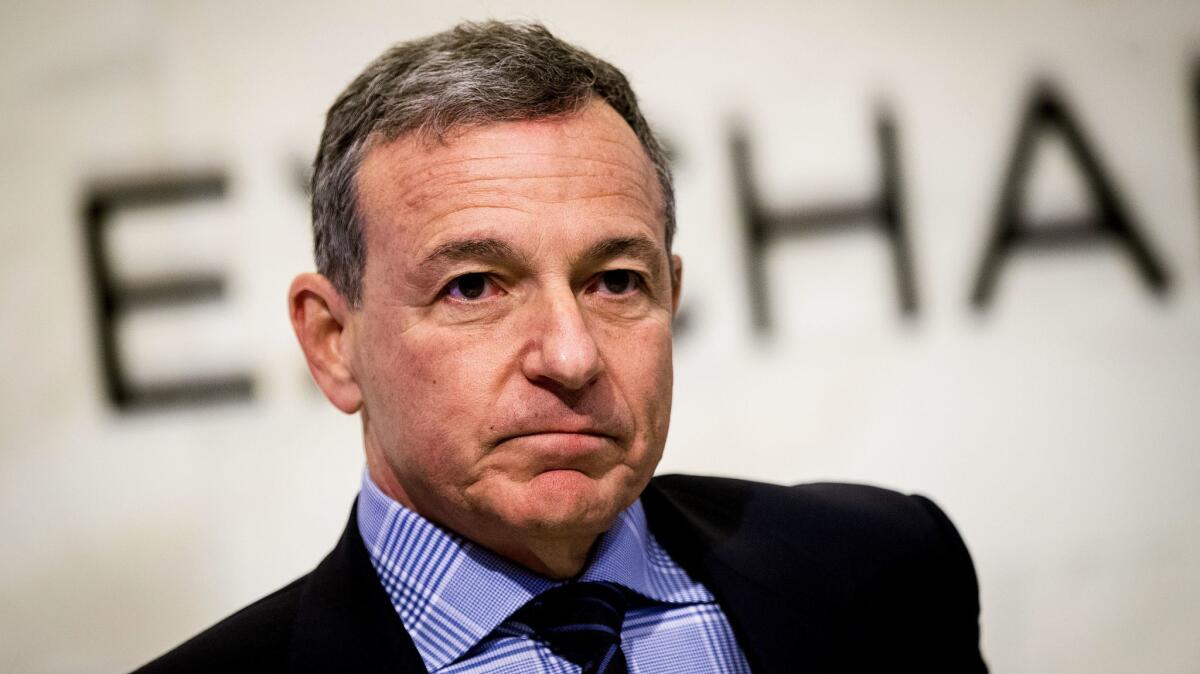Opinion: Disney’s purchase of Fox will make it more expensive to dump cable TV

- Share via
The Walt Disney Co. sees the future of media consumption, and it’s … messy.
The Hollywood giant’s $52.4-billion purchase of key programming assets from 20th Century Fox, a not-quite-as-giant Hollywood studio, will help Disney turn its forthcoming streaming TV and movie service into a must-have for cable cord-cutters. In fact, depending on what Disney decides to make available only on the internet, its streaming service may be appealing to even those who plunk down $150 a month for pay TV.
The point is to compete with Netflix and Amazon, two top video streaming services. Unlike pay TV — for example, AT&T’s DirecTV and Charter Communications’ Spectrum — streaming services don’t offer bundles of programming. They compete to a large degree on exclusives, including original programming (Amazon’s “Transparent,” for example, and Netflix’s “Stranger Things”) and studio partnerships.
Just how many services will cord cutters be willing to buy? How many monthly fees can they afford?
As more streaming services enter the market, though, original and exclusive programming is fragmenting even further. (Don’t forget Hulu, a streaming service Disney would control under the Fox deal, which held the rights to “The Handmaid’s Tale.”) Just how many services will cord cutters (or “cord nevers,” consumers who never signed up for cable or satellite TV in the first place) be willing to buy? How many monthly fees can they afford?
Disney’s new TV and movie streaming service, which is slated for 2019, represents the next big step in that fragmentation. Today, much of Disney’s movies and TV shows are available on Netflix, but that deal expires next year. (Fox’s TV shows have already started to vanish from Netflix as contracts expire.) After that, Disney could make movies from its stable of studios — including Pixar, Marvel, Lucasfilm and, if the Fox deal survives antitrust scrutiny, 20th Century Fox — available for streaming just through its own service. Ditto for its bulked-up library of television shows, from Fox’s “The Simpsons” and “MASH*” to Disney’s “Phineas and Ferb.” (Disney plans a separate streaming service built around ESPN and other sports channels, which now presumably will include Fox’s 22 regional sports networks.)
Of course, doing so would also be a blow to Hulu. But it would certainly help get the new Disney service off and running.
Ultimately, the question for consumers will be how much video is enough. None of the streaming services has tried to replicate the huge bundles sold by pay TV, at least not yet. Instead, they’ve aimed at viewers who are happy spending less money on fewer channels.
Consumers often sign up for multiple streaming services today, assembling the personalized bundles that pay-TV providers don’t offer (largely because the networks that supply the channels won’t let them). Maybe the new Disney service will simply persuade cord cutters and other viewers to open their wallets wider and add another service to the mix.
That’s one of the main reasons Disney is spending a fortune on Fox’s programming assets — to make sure its new streaming service will be compelling enough to make the cut. In doing so, however, it’s forcing more consumers to answer a tough question that pay-TV services and their giant bundles of channels don’t pose: What shows in the increasingly fragmented TV universe can they live without?
Twitter: @jcahealey
More to Read
A cure for the common opinion
Get thought-provoking perspectives with our weekly newsletter.
You may occasionally receive promotional content from the Los Angeles Times.










